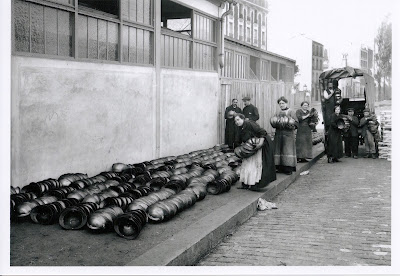Fifty years on has me a little reflective regarding my hobby. I've posted about a Japanese type 90 that I found (or helped find) on Guam in 1972. And that's where the bug bit me.
I've been collecting ever since then.
I've had as many helmets pass through my collection as I have in it now. Over the years I've more and more, tightened the focus of the collection to include only ground and naval combat helmets, of the 20th century.
Gone are the aviaition helmets, military police, para-military, armored vehicle, civil defense, parade helmets, gone are the experimentals, gone are the stray M1 liners. The collection now is about as curated as it is going to get and I get a great deal of pleasure out of it.
The collection is mostly garden-variety plain Janes, though there are three or four real stand-outs. I'm very happy with it.
Where I'm going with this is, when I came home from the Navy in 1974 I would go to militaria shows and gun shows, looking for helmets. And truly, I thought that I was one of the only people who had such a hobby, Slowly, I became aware that I was part of a very large community of collectors who had the same interest as I. There weren't the wealth of books and guides that there are today, but people like the legenday Floyd Tubbs gave me some good initial advice and encouragement.
I have seen tremendous growth in the hobby over five decades. And with the internet, facebook, and other online groups, one can see that the hobby is growing and attracting younger and younger collectors all the time.
I remember the evening at a friend's house, when he introduced me to ebay, maybe 25 years ago...at that time ebay had been around for a couple of years. I immediately entered "helmet", and was presented with 1,200 auctions. Tonight, there are over 25,000 active helmet auctions.
With this growth have come some downsides, including skyrocketing prices, and the plague of fakery. Fakery to the degree that it often seems pointless to shop for WWII German helmets, or unit marked M1 helmets. I caution beginner collectors to do as much research as they can before considering the high-end items; there are a lot of sharks in the water.
Despite that, I'm happy to see the hobby growing, and one of my greatest satisfactions with this blog, and my helmet videos, is to share my insights and advice with the beginners...and be clear, I never refer to myself as an expert. I am far from that; rather, I call myself an "experienced beginner."
Why don't you share (in the comments) your favorite helmet-collecting story.
Let's continue collecting and continue keeping the hobby fun.
See you next time with another cool helmet from the collection,
Mannie















































